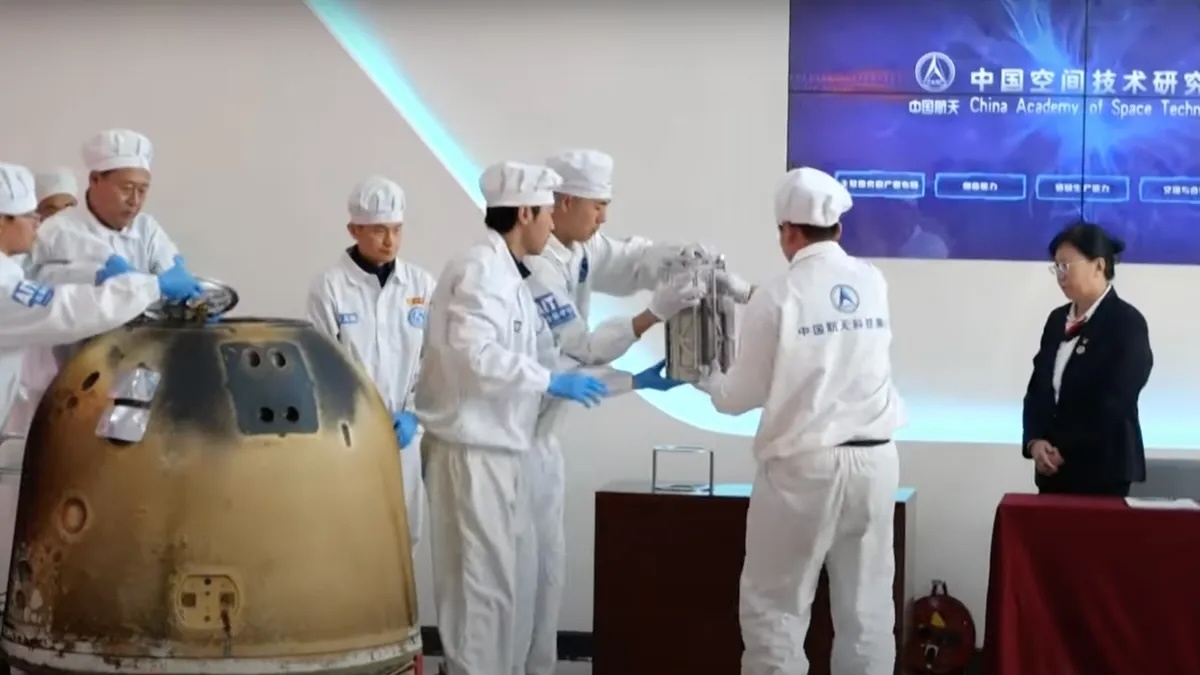23.09.2024
The samples could lead to new theories regarding the origin and evolution of the moon.

Technicians remove the samples collected on the moon's far side from the return capsule of the Chang'e 6 lunar mission. (Image credit: CCTV)
We finally have a glimpse of the first-ever samples collected from the far side of the moon.
The first paper on the samples collected from China's Chang'e 6 lunar probe reveals that the specimens differ in some ways from those collected from the moon's near side. Thus, they could provide fresh insights and lead to new theories about the moon and its evolution.
China launched its complex, 53-day-long Chang'e 6 lunar far side sample return mission in early May. A lander scooped and drilled for samples inside an area known as Apollo crater before sending them into lunar orbit on an ascent vehicle. In lunar orbit, the samples were transferred to a waiting moon orbiting craft. A reentry module delivered 4 pounds and 4.29 ounces (1,935.3 grams) of lunar material to Earth in late June.
The samples were initially taken to specially developed facilities for storage, analysis and eventual distribution for research. And now, a new study published in National Science Review has given us our first insight into the precious material.
Li Chunlai and fellow researchers studied the portion of the samples collected by robotic scoop. They found the collected samples have a lower density compared to previous lunar samples, which were retrieved from the lunar near side. More specifically, the far side samples indicate a looser and more porous structure than the near side samples. The "sample is quite loose and would be even fluffier in its 'natural' state on the lunar surface," the researchers wrote.
The soil also contains more light-coloured particles like feldspar and glass compared to the samples collected by the 2020 Chang'e 5 near side mission. This, and other insights into composition, suggests a higher presence of materials delivered to the sampling area from afar. This occurs, for example, when impact events (such as an asteroid hit) leads to ejecta spraying upward and outward from the impact area.The composition of the basaltic rock at the site of the sampling is thought to be mixed with ejecta from non-basaltic regions.
The samples also hold a lower concentration of KREEP, a rock signature short for potassium (chemical symbol K) enriched rock, rare‐earth elements (REE) and phosphorus (chemical symbol P), which is more abundant on the near side. This asymmetry could partially explain why the far side is so different from the near side of the moon.
The researchers assert that the samples could advance the understanding of several key aspects of lunar science. This includes the moon's early evolution, how volcanic activities differed between the near side and far side, the impact history of the inner solar system, the galactic activity record preserved in the lunar weathering layer, and the composition and structure of the lunar crust and mantle.
"These insights are expected to lead to new concepts and theories regarding the origin and evolution of the moon," the researchers conclude.
The Chang'e 6 samples are likely to yield these new insights as the material is made available to Chinese researchers in the near future. International researchers are expected to be able to apply for samples after a period of two years.
Quelle: SC
